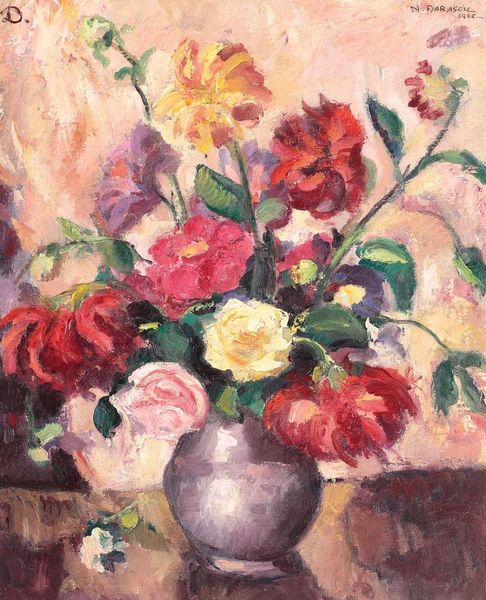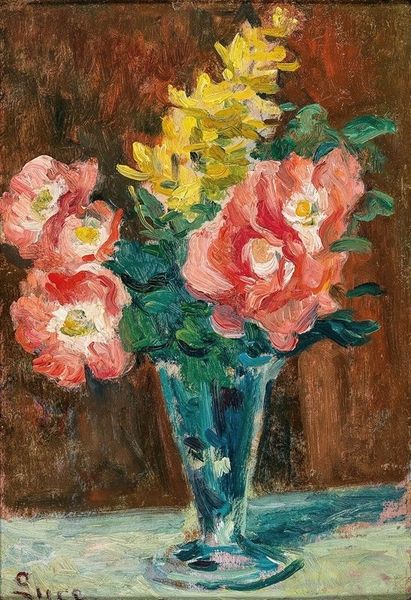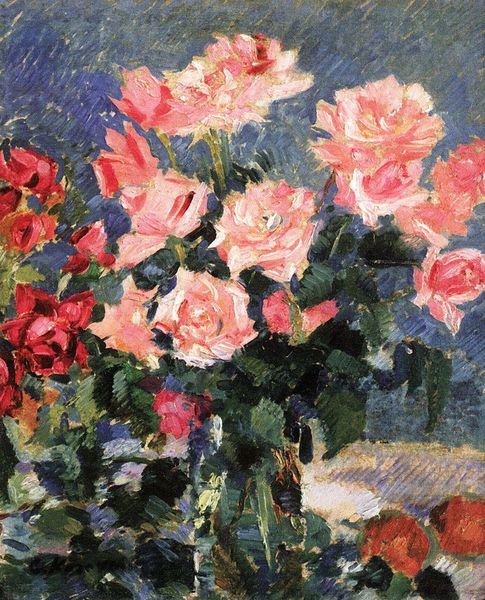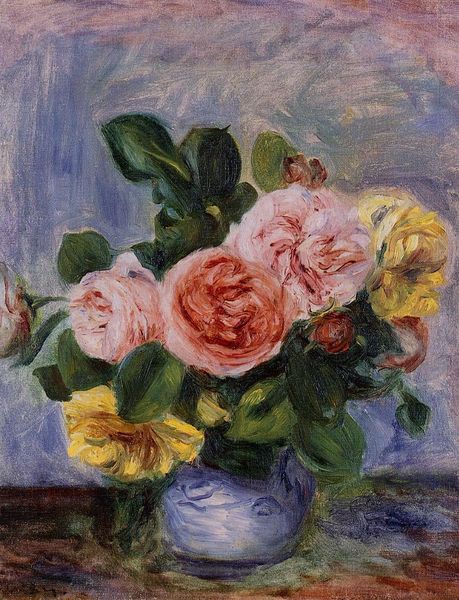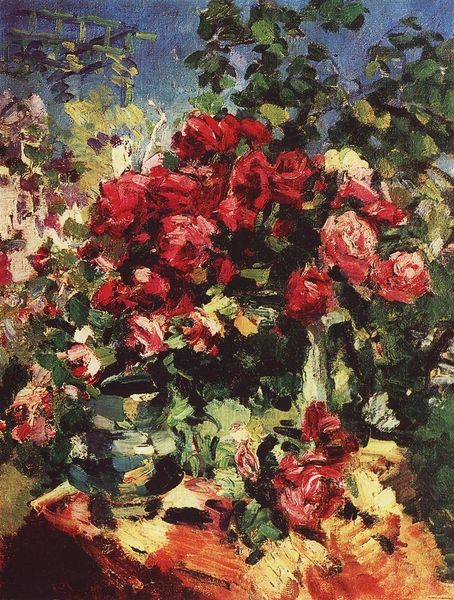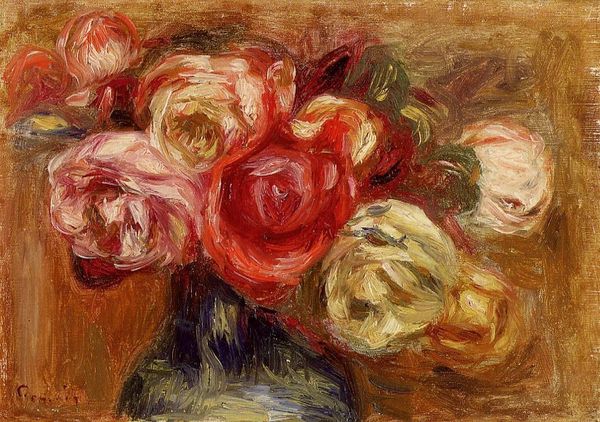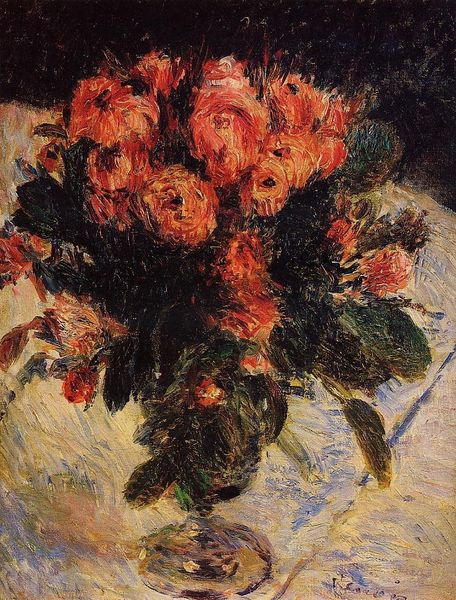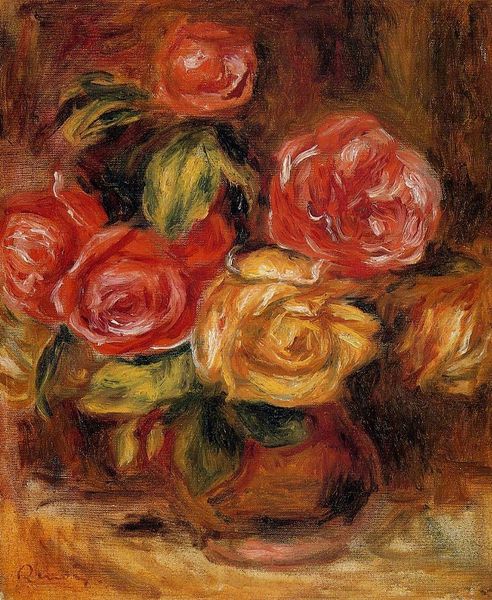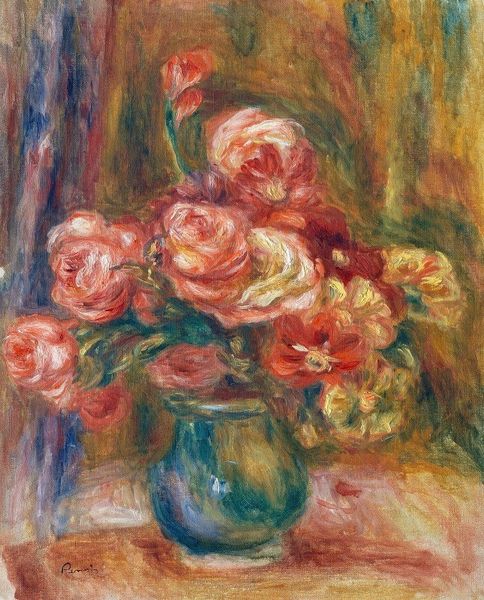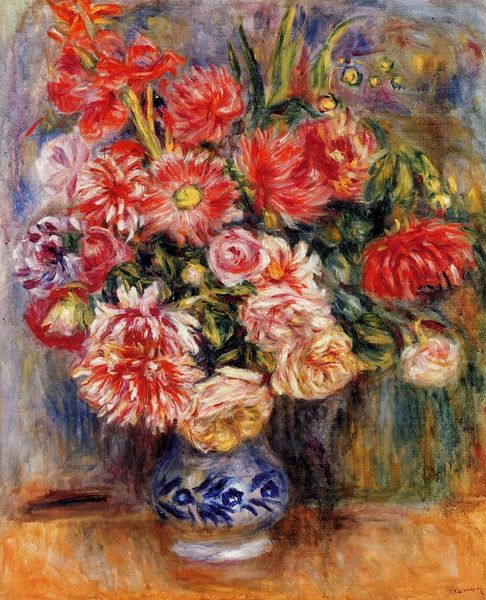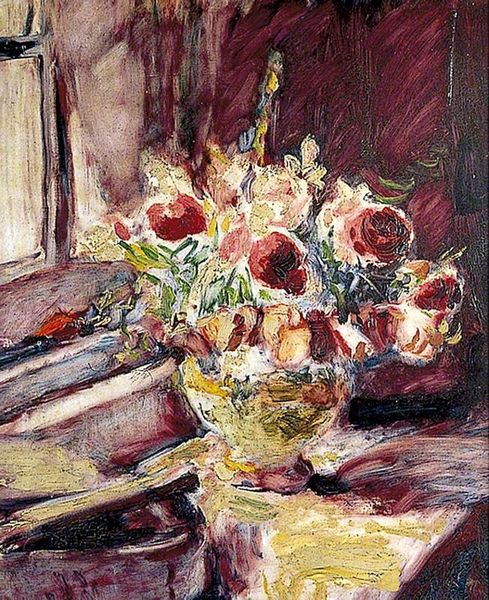
Copyright: Public domain
Editor: Right, so this is “Rose against the Sea,” painted by Konstantin Korovin around 1930, using oil paints. I'm struck by how tactile it feels, almost like you could reach out and touch the texture of the paint. What can you tell me about the process of making this work? Curator: What I see here is the artist’s explicit focus on materiality. Notice the thick application of paint, the visible brushstrokes; it’s about emphasizing the *act* of painting, of transforming pigment into form. Given the context of 1930s Russia, how might this emphasis on material and process speak to the social realities of artistic production at the time? Editor: That’s an interesting point. Was there perhaps a shift away from more academic styles, valuing the artist's hand and the materials themselves? Curator: Precisely. Consider the means of production. Oil paint itself – a manufactured material, subject to industrial processes – connects to broader economic structures. Even the canvas itself tells a story. Was it factory-produced or handmade? The labor involved, and who benefits from that labor, is central. Also, think of how the materials used influenced the subject matter selected for representation in Russian still-life painting during this period. Editor: So, beyond just pretty flowers, you're suggesting that the roses and the sea beyond are almost secondary to the statement being made about the paint and the painter? Curator: Exactly. We see not just the representation of a scene but the active assertion of the artist's process within a specific social and material context. What looks like a simple still life, then, becomes an exploration of labor and materiality in the art world. Editor: I hadn't thought of it that way, seeing beyond the surface and considering how the creation itself makes a statement. Thanks, that’s a great insight. Curator: My pleasure. Looking closer reveals how seemingly simple choices about materials and techniques reveal broader stories of art and labor.
Comments
No comments
Be the first to comment and join the conversation on the ultimate creative platform.
